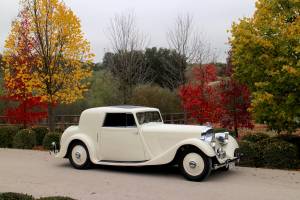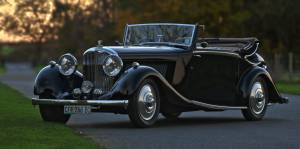Bentley 4 1/4 Litre Classic Car Buying
The Bentley 4 1/4 Litre, built between 1933 and 1939 in Derby, stands for British luxury and technical refinement of the pre-war period. Chosen by demanding customers and bodied by names such as Park Ward and Vanden Plas, it offers a tailor-made mixture of comfort, power, and lasting value. The 4¼ Litre models, produced in limited numbers, show remarkable diversity in craftsmanship and detail.
Search results
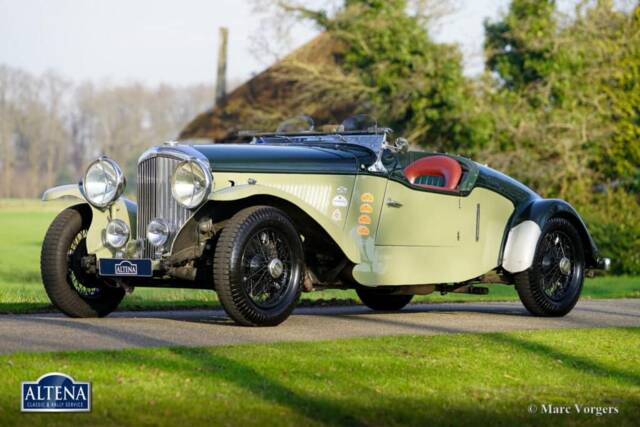
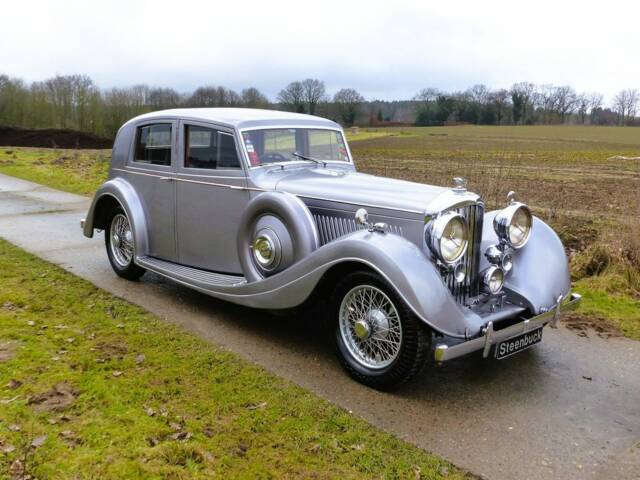
1936 | Bentley 4 1/4 Litre
2nd body in the “Razor Edge” design by Gurney Nutting

1936 | Bentley 4 1/4 Litre Barker
Beautiful and unique 1936 Bentley coupe by Barker
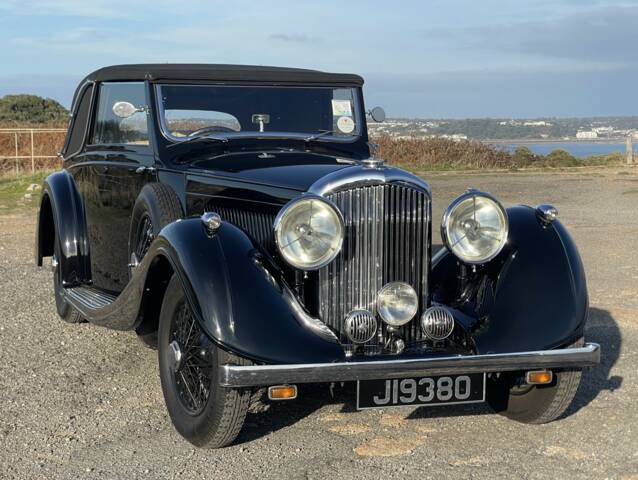
1938 | Bentley 4 1/4 Litre
Sedanca by Gurney Nutting
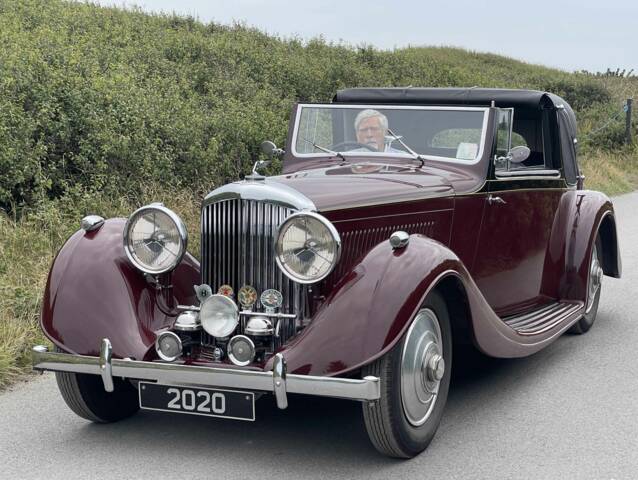
1938 | Bentley 4 1/4 Litre
Sedanca by Gurney Nutting

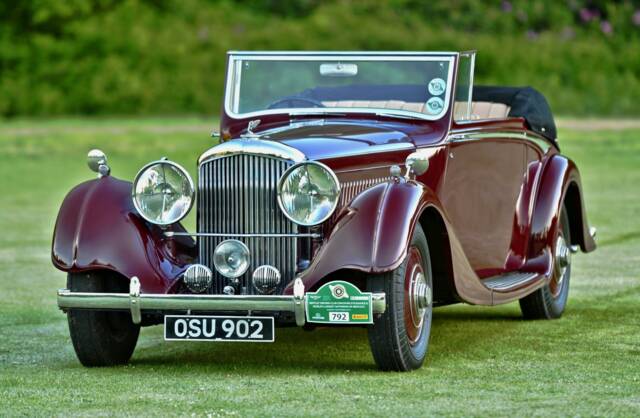
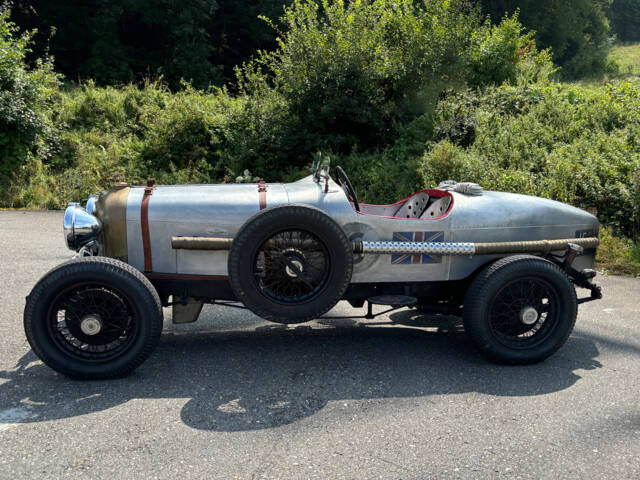
1936 | Bentley 4 1/4 Litre
Schneider Bentley
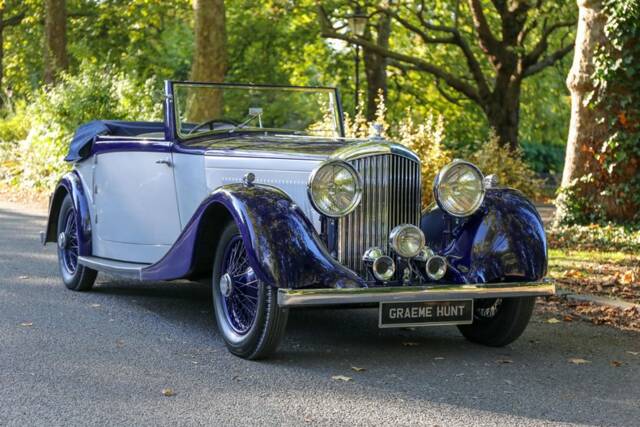
1936 | Bentley 4 1/4 Litre
1936 Bentley 4.25 Litre Drophead Coupe
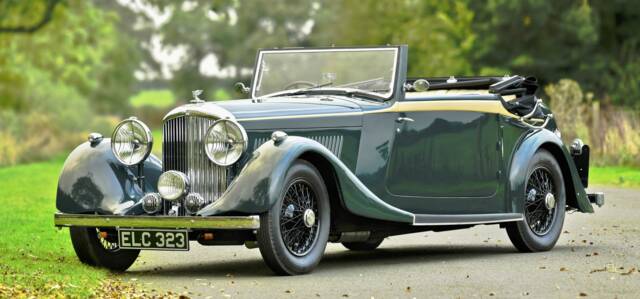

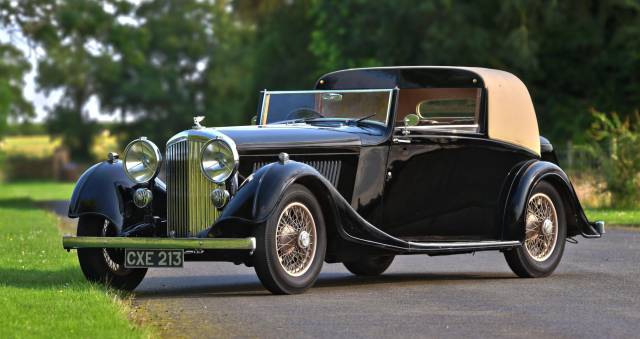
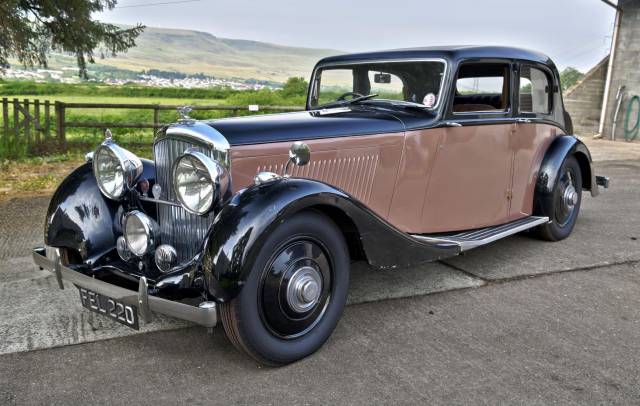
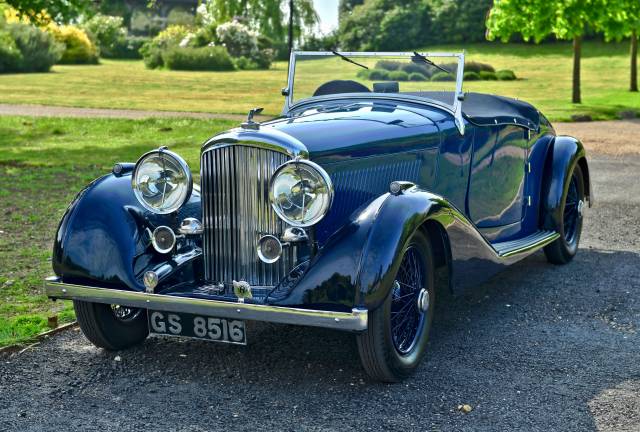
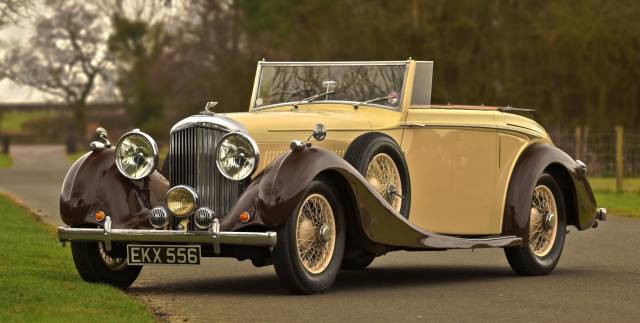
The story of the Bentley 4 1/4 Litre
After the acquisition of Bentley by Rolls-Royce in 1931, the first truly new Bentley project was the 4 1/4 Litre. Built in Derby, the vehicle inherited Rolls-Royce's engineering discipline and focus on function combined with understated luxury. Emerging as a successor to the 3½ Litre, the 4 1/4 Litre debuted in 1936 and remained in production until 1939. Unlike its sportier forebears, the Derby Bentley prioritised everyday driving comfort and durability. Yet it retained enough performance to appeal to clients with a taste for refined speed. The famous chassis was paired with beautifully finished coachwork, typically selected by each buyer from renowned coachbuilders. This marriage of robust mechanicals and hand-built bodies helped ensure an impressive survival rate: approximately 70% are still in existence.
Development and model timeline
The Bentley 4 1/4 Litre directly succeeded the 3½ Litre, itself a bold departure from Bentley's earlier racing image. The chassis configuration was barely changed throughout its production time, but several technical and styling improvements mark its evolution. The series included important updates such as the introduction of the Marles steering box and an optional overdrive gearbox in the MR and MX series from 1938. Eleven special versions appeared, with original coachwork ranging from saloons to drophead coupés. Upon its discontinuation in 1939, the Mark V took its place, signalling Bentley's technical transition into the postwar era.
Special features and rarity
The 4 1/4 Litre distinguishes itself by the sheer variety of bespoke coachwork, most notably those by Park Ward, Vanden Plas, and the rarer Windovers. Each car embodies its owner's preferences, from grand touring saloons to elegant drophead coupés and tailormade specials—nearly every chassis left the factory as a unique specimen. Technical highlights include the robust inline six-cylinder (4257 cc), servo-assisted brakes, and a four-speed manual gearbox. Top speeds up to 160 km/h, depending on body style, were achievable. In terms of statistics, on the Classic Trader platform, Bentley 4 1/4 Litre listings make up 100% of the manufacturer code entries for this series, reflecting exclusive focus and uniqueness in supply. Demand matches supply, with 100% share of views among Bentley classics, underlining the 4 1/4 Litre's outstanding relevance among historic Bentleys.
Technical data
Special editions and rarities
A total of eleven special versions enriched the line-up:
- Pourtout-Embiricos Coupé: Developed for endurance and racing, aerodynamically optimised and particularly fast (recorded at 185 km/h at Brooklands).
- Mulliner Streamlined Drophead Coupé: Stands out for its distinctive flowing lines.
- Veth & Zoon Drophead Coupé, Vesters & Neirinck Drophead Coupé, James Young Sedanca Coupé, and others – each body created with unique visual and functional flourishes.
- The Vanden Plas and Park Ward-bodied cars remain the most common, with Hooper and Windovers among the rarer makers.
- Estate (shooting brake) and convertible iterations exist, each reflecting a specific era's customer request and taste.
Maintenance and known issues
The Derby Bentley’s engineering is solid when maintained correctly, but as with all pre-war cars, age requires regular attention to details. Original parts such as carburettors, braking systems (servo units), and drivetrain require thorough inspection and specialist knowledge. The coachbuilt bodies—often constructed in ash wood and aluminium—are subject to decay and corrosion if neglected, especially if the vehicle was stored poorly. Professional restoration and continued attention to lubrication, suspension (leaf springs), and the electrical system help sustain the car’s reliability. The value and uniqueness of each vehicle justify seeking expertise in vintage Bentley maintenance.
Engine, performance, and driving experience
The robust 4,257 cc straight six combines smoothness and torque, delivering reliable performance for both touring and brisk motoring. Depending on the body type and gearing, top speed approaches 160 km/h, with responsive handling supported by servo brakes and later models featuring Marles steering for improved accuracy. With the four-speed manual and strong chassis, the 4 1/4 Litre manages a blend of comfort and control notable for the era. Overdrive gearboxes in the MR and MX series further optimise highway cruising, making these variants particularly desirable for extended touring.
- Pourtout-Embiricos Coupé: Famous for its aerodynamic form and competition pedigree.
- Park Ward Saloon: Classic interpretation of British luxury and practicality.
- Vanden Plas Drophead Coupé: Favoured for its blend of elegance and open-air motoring.
- Mulliner Streamlined Drophead Coupé: Selected for its avant-garde styling and exclusivity.
Interior, exterior, materials, and design
The interior is defined by the finest British craftsmanship, combining leather upholstery, hand-polished wooden dashboards, and meticulously fitted instrumentation. Accessories and options depended on the buyer’s wishes, including unique armrest configurations, custom wood veneers, occasional tables, and special lighting. Exteriors varied widely; the mainstay Park Ward design features flowing wings and a stately profile, while the Vanden Plas bodywork introduced sportier elements. Colours ranged from deep British Racing Green to special order two-tone combinations, with detail variations reflecting each coachbuilder’s identity. Hallmarks such as Landau bars (on convertibles), unique wheel arch treatment, and period-correct badging distinguish the cars. Bespoke luggage, matching toolkits, and additional chrome fittings were frequent accessories specified at the time of order.
Further details and special facts
Many Bentley 4 1/4 Litres saw use in early motorsport, including appearances at the RAC Tourist Trophy and Le Mans, despite the car not originally being designed for competition. The endurance feats, such as those by the Embiricos Special, have contributed to the model’s reputation for reliability under stress. With each car being essentially a one-off, provenance and bodywork assignments play a major role in each example’s market valuation and historical importance. Surviving documentation, especially from coachbuilders, adds substantial interest for collectors and historians.
Summary
The Bentley 4 1/4 Litre stands out as the definitive British grand tourer of the 1930s, blending robust mechanicals and individualistic design with luxury and performance. Owning a Derby Bentley means stewardship of pre-war automotive history and British craftsmanship at its finest, with each example a testament to bespoke manufacturing and sustained value. For any enthusiast seeking a classic car that embodies technical evolution, stately design, and rarity, the 4 1/4 Litre delivers on all counts.


